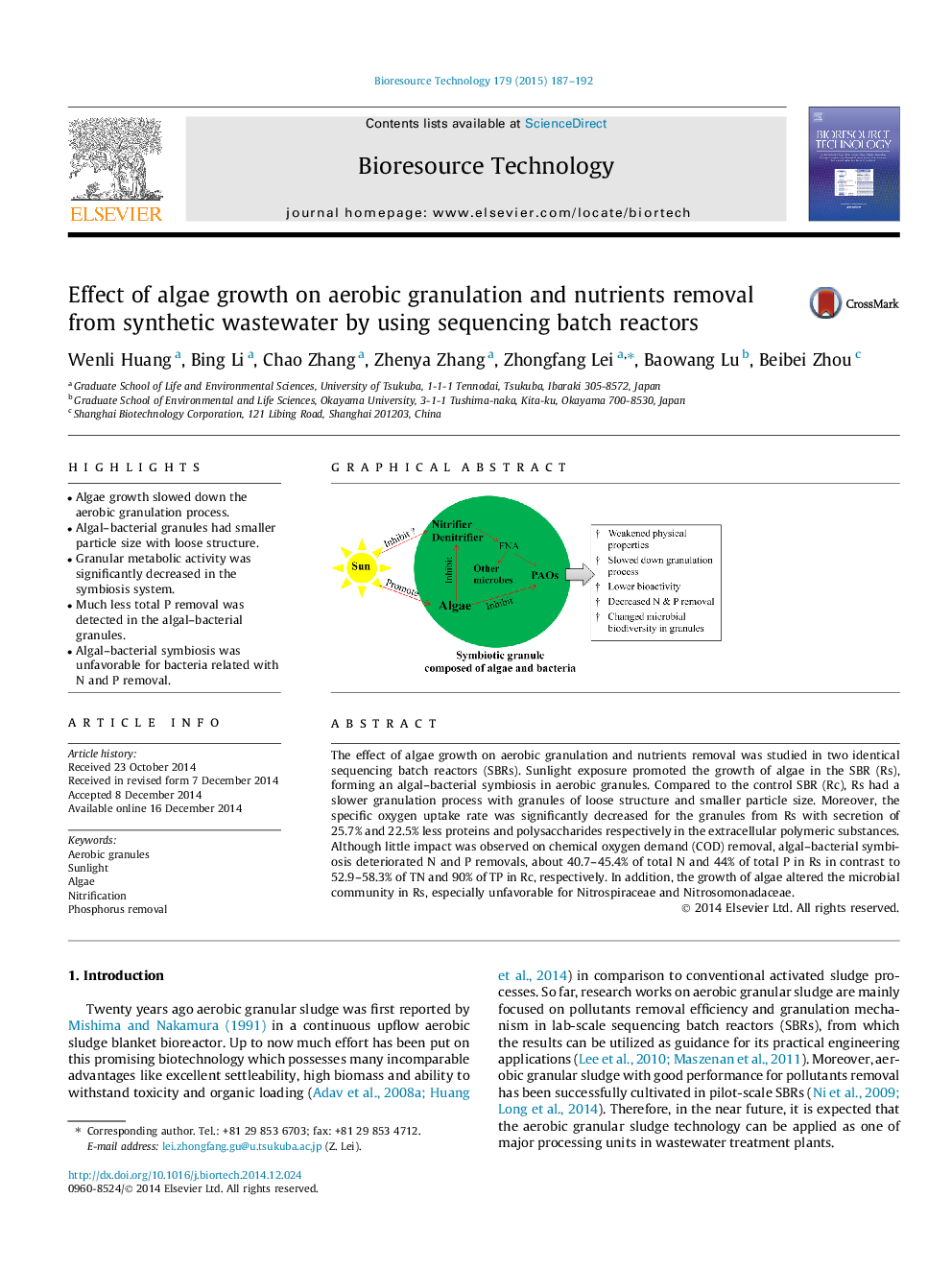| کد مقاله | کد نشریه | سال انتشار | مقاله انگلیسی | نسخه تمام متن |
|---|---|---|---|---|
| 680121 | 1459964 | 2015 | 6 صفحه PDF | دانلود رایگان |
• Algae growth slowed down the aerobic granulation process.
• Algal–bacterial granules had smaller particle size with loose structure.
• Granular metabolic activity was significantly decreased in the symbiosis system.
• Much less total P removal was detected in the algal–bacterial granules.
• Algal–bacterial symbiosis was unfavorable for bacteria related with N and P removal.
The effect of algae growth on aerobic granulation and nutrients removal was studied in two identical sequencing batch reactors (SBRs). Sunlight exposure promoted the growth of algae in the SBR (Rs), forming an algal–bacterial symbiosis in aerobic granules. Compared to the control SBR (Rc), Rs had a slower granulation process with granules of loose structure and smaller particle size. Moreover, the specific oxygen uptake rate was significantly decreased for the granules from Rs with secretion of 25.7% and 22.5% less proteins and polysaccharides respectively in the extracellular polymeric substances. Although little impact was observed on chemical oxygen demand (COD) removal, algal–bacterial symbiosis deteriorated N and P removals, about 40.7–45.4% of total N and 44% of total P in Rs in contrast to 52.9–58.3% of TN and 90% of TP in Rc, respectively. In addition, the growth of algae altered the microbial community in Rs, especially unfavorable for Nitrospiraceae and Nitrosomonadaceae.
Figure optionsDownload as PowerPoint slide
Journal: Bioresource Technology - Volume 179, March 2015, Pages 187–192
